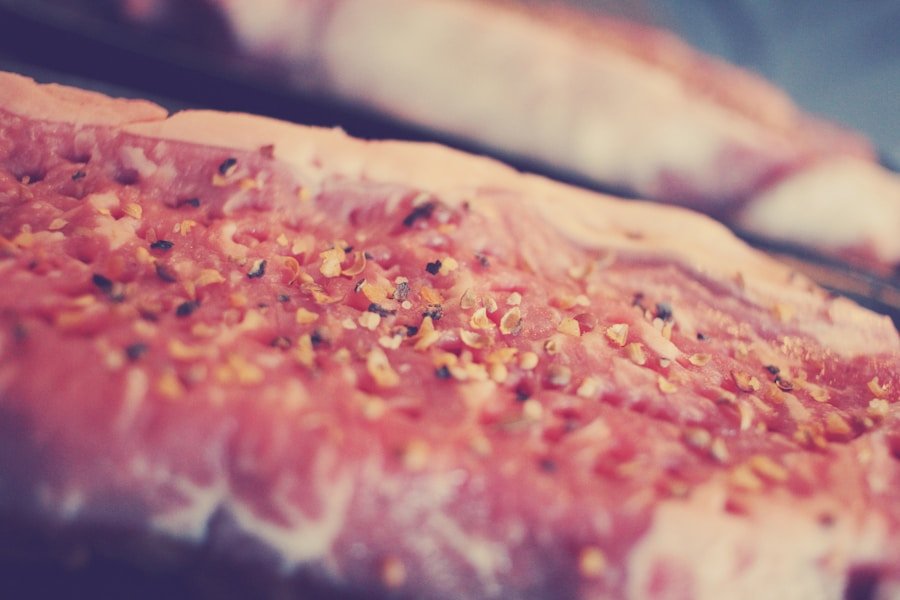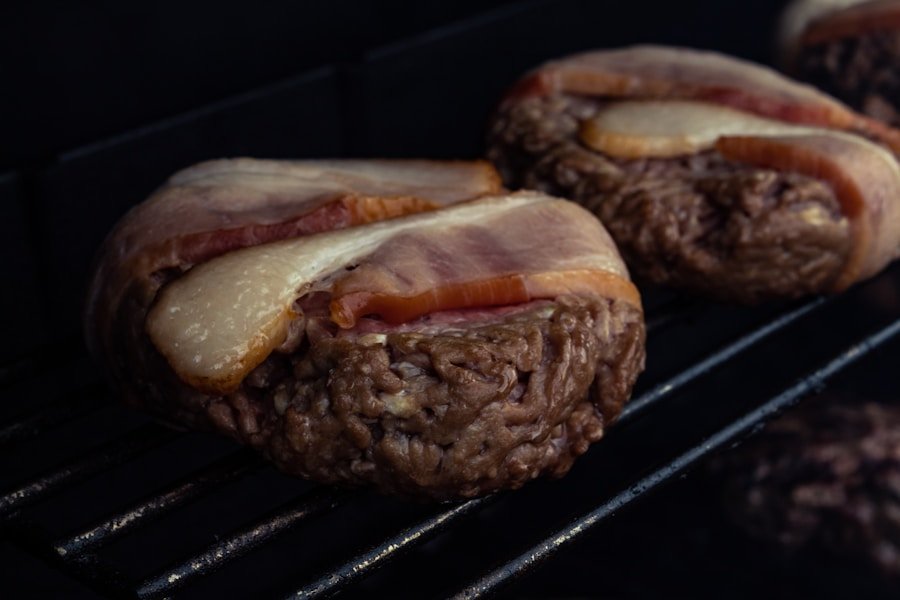When it comes to selecting bacon, the choices can be overwhelming, given the variety available in grocery stores and butcher shops. The first step is to decide between the different types of bacon, which primarily include traditional pork bacon, turkey bacon, and plant-based alternatives. Traditional pork bacon is often favored for its rich flavor and crispy texture, but it’s essential to consider the source.
Look for bacon that is labeled as “uncured” or “nitrate-free,” as these options typically contain fewer preservatives and additives. Additionally, opting for bacon from pasture-raised pigs can enhance the flavor profile and ensure a more humane farming practice. Beyond the type of meat, thickness is another crucial factor in choosing bacon.
Thick-cut bacon offers a hearty bite and tends to hold up better during cooking, while regular-cut bacon cooks faster and can become crispier. The choice between these two often depends on personal preference and the intended use of the bacon. For instance, if you’re preparing a breakfast platter or a BLT sandwich, thick-cut bacon may provide a satisfying texture.
Conversely, if you’re crumbling bacon for a salad or a topping, regular-cut might be more suitable. Additionally, consider the flavor profiles; some brands offer smoked or flavored varieties that can add an extra dimension to your dishes.
Key Takeaways
- Choose thick-cut bacon for oven cooking to ensure it stays crispy and doesn’t burn easily
- Pat the bacon dry with paper towels before placing it on a wire rack for even cooking in the oven
- Preheat the oven to 400°F for perfectly crispy bacon
- Cook the bacon for 15-20 minutes, flipping halfway through and monitoring for desired crispiness
- Place the cooked bacon on paper towels to drain excess grease before serving
- Add flavor and seasoning to the bacon by sprinkling with brown sugar, black pepper, or cayenne before cooking
- Serve the bacon immediately or store it in an airtight container for up to 4 days
- If the bacon is cooking unevenly, rotate the baking sheet halfway through the cooking time
Preparing the Bacon for Oven Cooking
Once you’ve selected your bacon, the next step is preparation. Preparing bacon for oven cooking is relatively straightforward but requires some attention to detail to ensure optimal results. Start by preheating your oven to 400°F (204°C), which is generally considered the ideal temperature for baking bacon.
While the oven heats up, line a baking sheet with aluminum foil or parchment paper. This not only makes cleanup easier but also helps to catch the drippings that will render out during cooking. Next, lay the strips of bacon on the prepared baking sheet in a single layer.
It’s important not to overcrowd the pan; leaving space between each strip allows the heat to circulate evenly, resulting in uniformly cooked bacon. If you’re cooking a large batch, consider using multiple baking sheets or cooking in batches to maintain that single-layer arrangement. For added convenience, you can also place a wire rack on top of the baking sheet.
This elevates the bacon and allows fat to drip away, leading to a crispier end product. However, if you prefer a chewier texture, placing the bacon directly on the baking sheet will yield delicious results as well.
Setting the Oven Temperature

Setting the right oven temperature is crucial for achieving perfectly cooked bacon. While 400°F (204°C) is a popular choice among many home cooks, some may opt for slightly lower temperatures like 375°F (190°C) or higher temperatures up to 425°F (218°C). The choice of temperature can significantly affect both cooking time and texture.
Cooking at a lower temperature allows for more even rendering of fat and can result in a more tender piece of bacon, while higher temperatures can lead to quicker cooking and a crispier finish. It’s also worth noting that different ovens may have slight variations in temperature accuracy. An oven thermometer can be an invaluable tool to ensure that your oven is truly at the desired temperature.
If your oven runs hot or cold, adjustments may be necessary to achieve optimal results. Additionally, consider whether you are using a convection setting; convection ovens circulate hot air more efficiently and may require a reduction in cooking time or temperature for best results.
Cooking Time and Monitoring
| Recipe | Cooking Time (minutes) | Monitoring Frequency |
|---|---|---|
| Spaghetti Bolognese | 30 | Every 5 minutes |
| Roast Chicken | 60 | Every 15 minutes |
| Chocolate Cake | 45 | Every 10 minutes |
The cooking time for bacon in the oven can vary based on several factors, including thickness, oven temperature, and personal preference for doneness. Generally speaking, thin-cut bacon will take about 15-20 minutes at 400°F (204°C), while thick-cut varieties may require 20-25 minutes or even longer. It’s essential to keep an eye on the bacon as it cooks; since ovens can vary in heat distribution, some strips may cook faster than others.
Monitoring the bacon closely during the last few minutes of cooking is particularly important. The transition from perfectly cooked to overdone can happen quickly, especially with thinner cuts. As the bacon approaches your desired level of crispiness, check it frequently to prevent burning.
If you prefer your bacon less crispy, you may want to remove it from the oven when it appears slightly underdone; it will continue to cook slightly from residual heat once removed.
Flipping and Draining the Bacon
Flipping bacon during cooking is often debated among home cooks. Some prefer to leave it undisturbed for even cooking and less mess, while others advocate for flipping halfway through to ensure both sides achieve an even crispness. If you choose to flip your bacon, do so gently with tongs around the halfway mark of your cooking time.
This technique can help achieve a uniform texture and color on both sides. Once your bacon reaches the desired level of doneness, it’s time to drain it properly. Using tongs, carefully transfer each strip of bacon onto a plate lined with paper towels.
This step is crucial as it allows excess grease to drain off, resulting in less greasy bacon that retains its crispiness. If you’ve used a wire rack during cooking, you can simply lift the rack and let any remaining grease drip off before transferring the bacon to your serving dish.
Adding Flavor and Seasoning

While bacon is delicious on its own, there are numerous ways to elevate its flavor profile through seasoning and additional ingredients. A simple sprinkle of black pepper or garlic powder before cooking can enhance its savory notes without overpowering its natural taste. For those who enjoy a touch of sweetness, consider drizzling maple syrup or honey over the strips before baking; this creates a delightful caramelization that complements the saltiness of the bacon.
For adventurous palates, experimenting with spices can yield exciting results. A dash of cayenne pepper or smoked paprika can add heat and depth, while brown sugar mixed with chili powder creates a sweet-and-spicy glaze that’s perfect for breakfast dishes or as a topping for salads. Additionally, incorporating herbs such as rosemary or thyme can introduce an aromatic quality that pairs beautifully with the richness of the bacon.
Serving and Storing
Once your bacon is cooked and drained, it’s ready to be served in various ways. Bacon can be enjoyed as part of a classic breakfast alongside eggs and toast or incorporated into sandwiches like BLTs or club sandwiches for added flavor and texture. It also makes an excellent topping for salads, baked potatoes, or even pizza, where its savory crunch contrasts beautifully with other ingredients.
If you find yourself with leftover cooked bacon, proper storage is essential for maintaining its quality. Allow the bacon to cool completely before transferring it to an airtight container; this prevents moisture buildup that could lead to sogginess. Cooked bacon can be stored in the refrigerator for up to five days or frozen for longer preservation—up to three months—if wrapped tightly in plastic wrap or aluminum foil before placing it in a freezer-safe bag.
Troubleshooting Common Issues
Even experienced cooks may encounter challenges when preparing bacon in the oven. One common issue is uneven cooking; if some strips are crisp while others remain chewy, this could be due to overcrowding on the baking sheet or variations in oven heat distribution. To remedy this, ensure that each strip has enough space around it and consider rotating the baking sheet halfway through cooking if you notice uneven browning.
Another frequent problem is excessive grease splatter in the oven. While using foil or parchment paper helps contain drippings, some grease may still escape during cooking. To minimize this issue, consider placing a baking sheet on a lower rack to catch any drips or using a splatter guard if available.
Lastly, if your bacon turns out too greasy despite proper draining techniques, it may be worth experimenting with different brands or cuts of bacon; some varieties naturally render more fat than others during cooking. By understanding these nuances of cooking bacon in the oven—from selecting the right type to troubleshooting common issues—you can master this beloved ingredient and enjoy its deliciousness in countless dishes.
If you’re looking to upgrade your kitchen with smart home technology, you may want to check out this article on the 5 Most Comprehensive Smart Home Starter Kits. These kits can help make your cooking experience even more convenient, allowing you to focus on perfecting recipes like cooking bacon in the oven. Additionally, if you’re interested in saving energy in your home, you may want to consider investing in one of the 5 Best Smart Thermostats for Energy Savings. And for a cleaner home environment, you might want to look into installing one of the 5 Top Central Vacuum Systems for Your Home.
FAQs
What are the benefits of cooking bacon in the oven?
Cooking bacon in the oven allows for even cooking and crispy results without the need for constant flipping. It also reduces the mess and splattering that can occur when cooking bacon on the stovetop.
What temperature should the oven be set to when cooking bacon?
The oven should be preheated to 400°F (200°C) when cooking bacon.
How long does it take to cook bacon in the oven?
Cooking bacon in the oven typically takes 15-20 minutes, depending on the thickness of the bacon and desired crispiness.
Do I need to flip the bacon when cooking it in the oven?
No, one of the benefits of cooking bacon in the oven is that it cooks evenly without the need for flipping.
What type of pan should be used to cook bacon in the oven?
A rimmed baking sheet or a wire rack placed on a baking sheet can be used to cook bacon in the oven. The rimmed baking sheet will catch the bacon grease, while the wire rack allows for the grease to drip off the bacon.
How should the bacon be arranged on the pan for cooking in the oven?
The bacon should be arranged in a single layer on the pan, with space between each slice to allow for even cooking.

